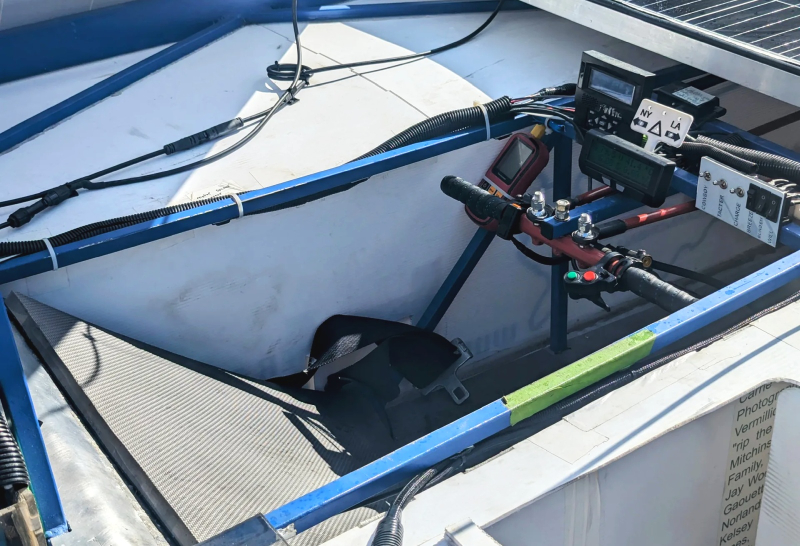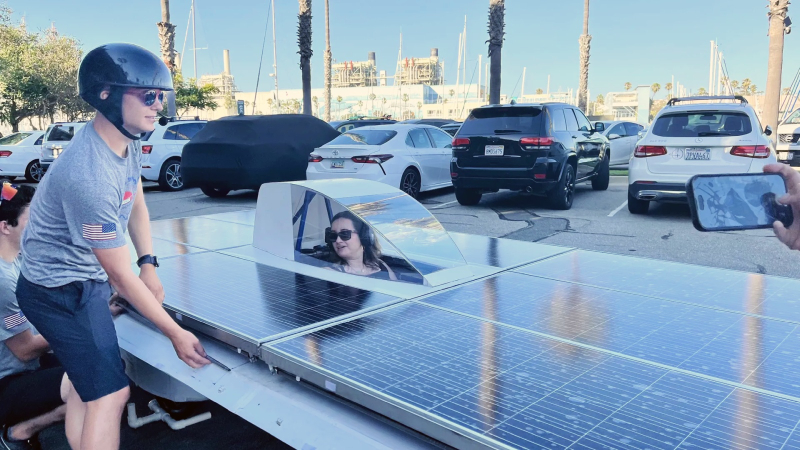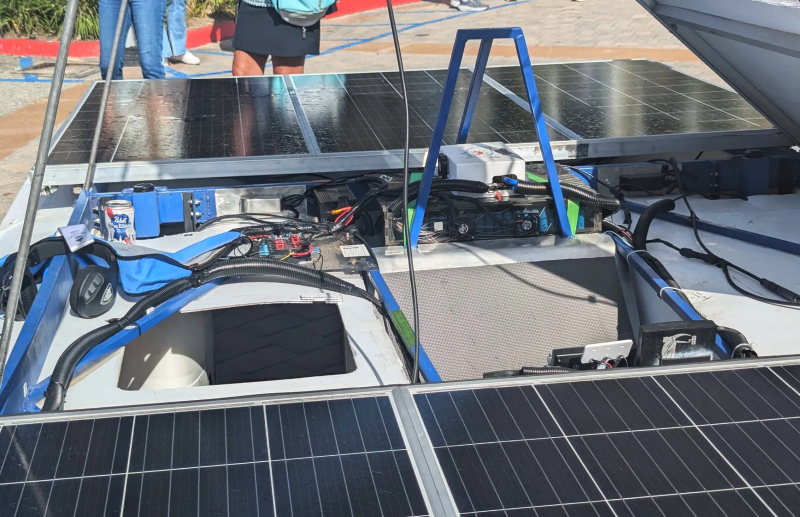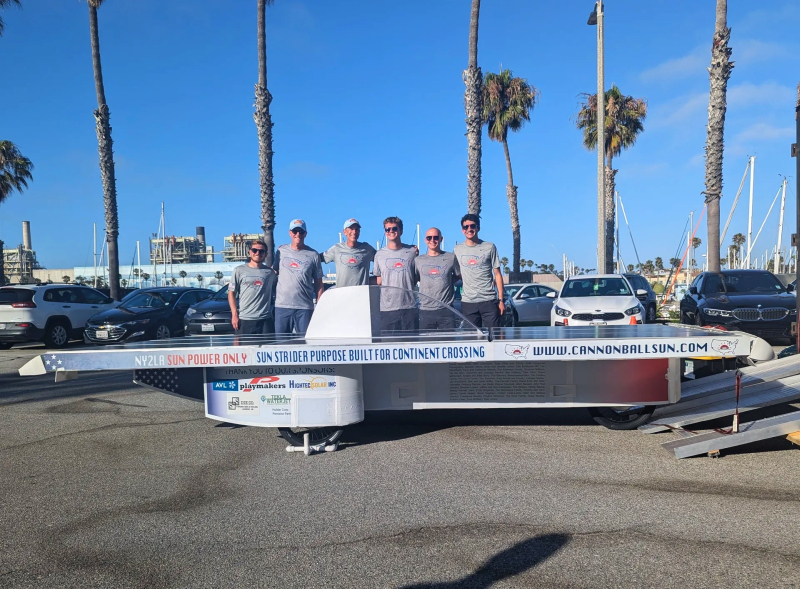The Canonball race, which stretches 4,800 km from the east to west coasts of the United States, is usually associated with speed, danger, clashes with police, lack of sleep, lack of rest stops and liters of energy drinks. This time it was different because speed was not the goal of the enthusiasts who built a solar-powered car and drove across the country in a record 13 days, 15 hours and 19 minutes.

Image Source: The Verge
The “solar car” built by friends, which they called the “Sunstrider”, consists of a tubular frame, corrugated plastic, 3D printed parts, a homemade 320-cell battery pack, three motors, eight solar panels and three bicycle wheels. . According to the team, building the car cost them approximately $12,000 and 90% of this amount was financed from their own funds.

The driver of the car controls it while in a supine position. The controls include an accelerator pedal, a front brake pedal and a pair of handles on the handlebars for mountain bike brakes on the rear wheels. The vehicle has dimensions similar to the Ford F150 pickup truck, but weighs only 254 kg. The car has a gigantic turning radius, so when taking sharp turns the car was moved manually.

The Sunstrider is registered as a motorcycle in Michigan and is legal for use on roads other than freeways, as the vehicle cannot physically exceed 50 mph. The maximum speed recorded during the rally on the descent along Angeles Crest towards the Pacific Ocean was 82 km per hour. The electric car was stopped twice by police for “speeding too slowly”, but no fines were issued.
This isn’t the first time Will Jones, Kyle Samluk and Danny Ezzo have attempted to build a solar car, nor is it the first time they’ve attempted to travel from New York to Los Angeles in a solar car. The previous run in 2021 ended in failure at one-third of the distance due to a faulty engine controller.

The team learned its lessons and made significant changes to the new car. Ezzo says they used more efficient components to make the car 48% lighter, and covered 965km during testing. “From the time we decided to do this to the time we were in New York with the solar car running and running, it was five months, so the timeline was very tight,” Ezzo added. “We were crazy ambitious and maybe a little naive.”
The fourth driver was Brett Cesar, and Will’s father Brian Jones drove the escort car. In good weather, drivers changed approximately every two hours. While crossing the desert, the team encountered abnormal heat. The temperature in the cabin reached 54 °C; for obvious reasons, there was no air conditioning, so participants in the rally had to change at intervals of 30–45 minutes to avoid heat stroke and dehydration. The equipment also had a hard time – the charge controller could not withstand overheating and required replacement.

The researchers learned a lot while running and working on the car. “It means a lot to us as a team,” Ezzo said. “All the 100-hour weeks, missed family meetings and sacrifices we made were worth it.” The experience gained will be useful to young engineers – Jones is expected to work at SpaceX, Samlyuk at Ford, and Ezzo is graduating from the Michigan Institute of Technology.